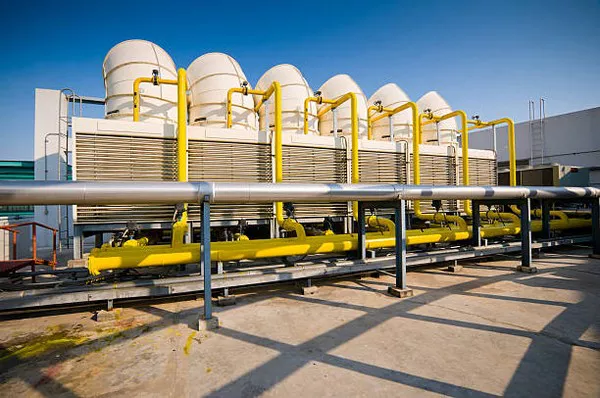Breathing air compressors play a critical role in various industries, particularly in environments where breathable air is scarce or contaminated. These specialized compressors ensure a reliable supply of safe air for breathing, making them essential in fields like firefighting, diving, and industrial work. This article delves into the functionality, applications, maintenance, and safety aspects of breathing air compressors, providing a thorough understanding of this vital equipment.
1. What is a Breathing Air Compressor?
Definition
A breathing air compressor is a device specifically designed to compress air that meets strict safety and purity standards for human respiration. Unlike standard compressors, which may not filter or purify air, breathing air compressors ensure that the air delivered is free from contaminants and safe for inhalation.
How It Works
Breathing air compressors operate by drawing in ambient air, compressing it, and then filtering it to remove moisture, particulates, and harmful gases. The key steps in the process include:
Intake: Ambient air is drawn into the compressor through an intake valve.
Compression: The air is compressed to the desired pressure, typically between 3,000 to 4,500 psi.
Filtration: The compressed air passes through filters that remove moisture, oil, and contaminants.
Storage: The purified air is stored in high-pressure cylinders or tanks for later use.
2. Applications of Breathing Air Compressors
Breathing air compressors are utilized in a variety of settings where clean, breathable air is essential. Some of the primary applications include:
Firefighting
Firefighters use breathing air compressors to fill their SCBA (Self-Contained Breathing Apparatus) tanks with breathable air, allowing them to operate in smoke-filled or hazardous environments safely.
Industrial Work
Industries such as manufacturing, construction, and mining often require breathing air for workers who enter confined spaces or environments with toxic fumes. Breathing air compressors provide the necessary air supply for these situations.
Diving Operations
In commercial and recreational diving, breathing air compressors are used to fill scuba tanks with clean air, enabling divers to explore underwater environments safely.
Medical Use
Some medical facilities use breathing air compressors to supply clean air for patients who require respiratory support or in situations where air quality is compromised.
3. Types of Breathing Air Compressors
Breathing air compressors come in various types, each designed for specific applications and environments:
Portable Breathing Air Compressors
These compact units are designed for easy transport, making them ideal for use in remote locations or in emergency situations. They are commonly used by firefighters and rescue teams.
Stationary Breathing Air Compressors
These compressors are typically larger and designed for fixed installations in industrial settings. They provide a continuous supply of breathable air for large-scale operations.
Electric vs. Gas-Powered Compressors
Breathing air compressors can be powered by electricity or gasoline. Electric compressors are generally quieter and more efficient, while gas-powered models are useful in locations without electrical access.
4. Key Features of Breathing Air Compressors
When selecting a breathing air compressor, several key features should be considered:
Filtration System
The filtration system is critical for ensuring the air quality. Look for compressors with multi-stage filtration that can remove moisture, oil, and particulate matter.
Pressure Rating
Different applications require different pressure ratings. Ensure the compressor meets the specific pressure requirements for your use case.
Portability
If mobility is essential, choose a lightweight and compact compressor. Portable models are equipped with wheels or handles for easy transport.
Safety Features
Safety is paramount when dealing with breathing air. Look for features like pressure relief valves, automatic shut-off systems, and alarms for low air quality.
5. Maintenance of Breathing Air Compressors
Regular maintenance is vital for ensuring the efficiency and safety of breathing air compressors. Key maintenance practices include:
Regular Inspections
Conduct regular inspections to check for leaks, pressure integrity, and filter conditions. This helps identify potential issues before they escalate.
Filter Replacement
Filters should be replaced according to the manufacturer’s recommendations. Clogged filters can reduce efficiency and contaminate the air supply.
Lubrication
Ensure all moving parts are adequately lubricated to minimize wear and tear. Follow the manufacturer’s guidelines for the appropriate lubricants.
Testing Air Quality
Regularly test the air quality produced by the compressor to ensure it meets the required safety standards for breathing air.
6. Safety Considerations
Safety is crucial when operating breathing air compressors. Some important safety considerations include:
Proper Training
Ensure all personnel operating the compressor are adequately trained in its use and maintenance. This includes understanding safety protocols and emergency procedures.
Monitoring Air Quality
Regularly monitor the air quality to ensure compliance with OSHA and other regulatory standards. Implement air quality testing procedures as part of your maintenance routine.
Emergency Protocols
Have emergency protocols in place for equipment failure, air contamination, or other unforeseen issues. This includes having backup air supply systems ready for use.
7. Conclusion
Breathing air compressors are essential tools for providing safe, breathable air in various high-risk environments. Understanding their functionality, applications, maintenance needs, and safety protocols is crucial for ensuring effective and safe use. By choosing the right compressor and adhering to maintenance and safety practices, users can ensure a reliable air supply for any application requiring breathable air. Whether for firefighting, industrial work, or diving, investing in a quality breathing air compressor is vital for safety and efficiency.
Related topics:

